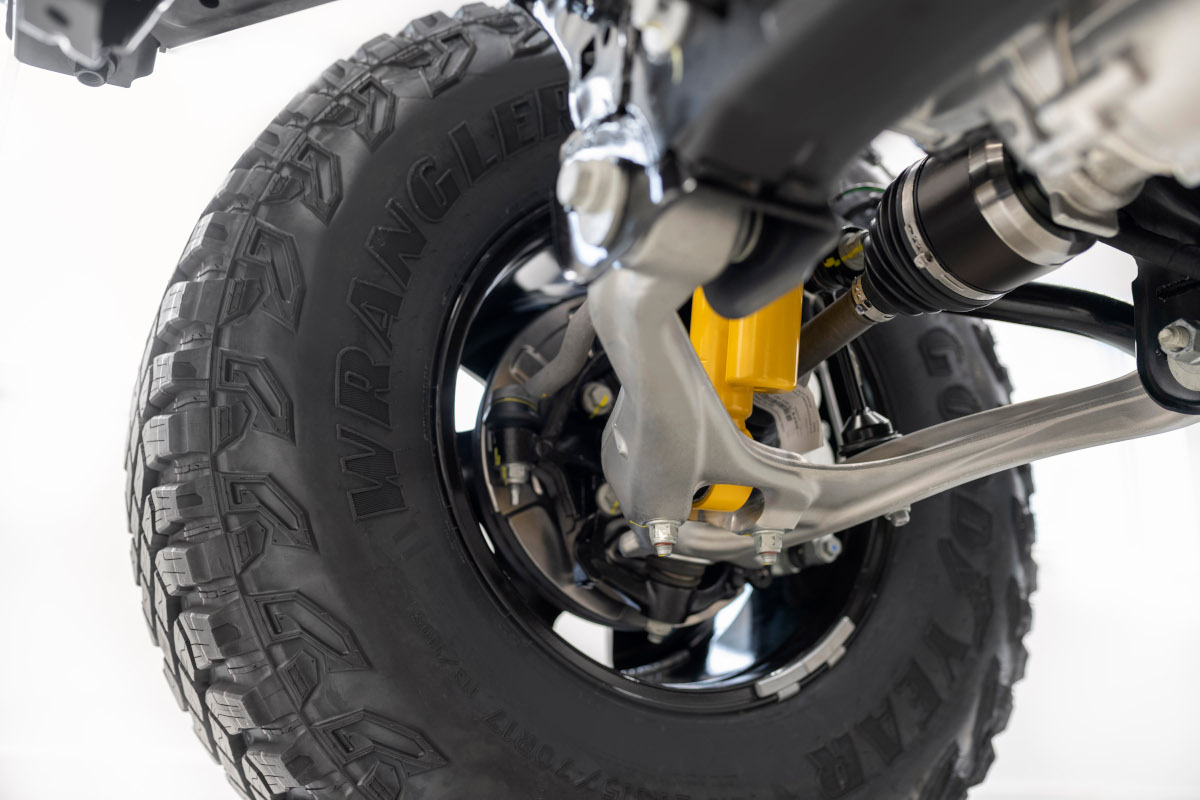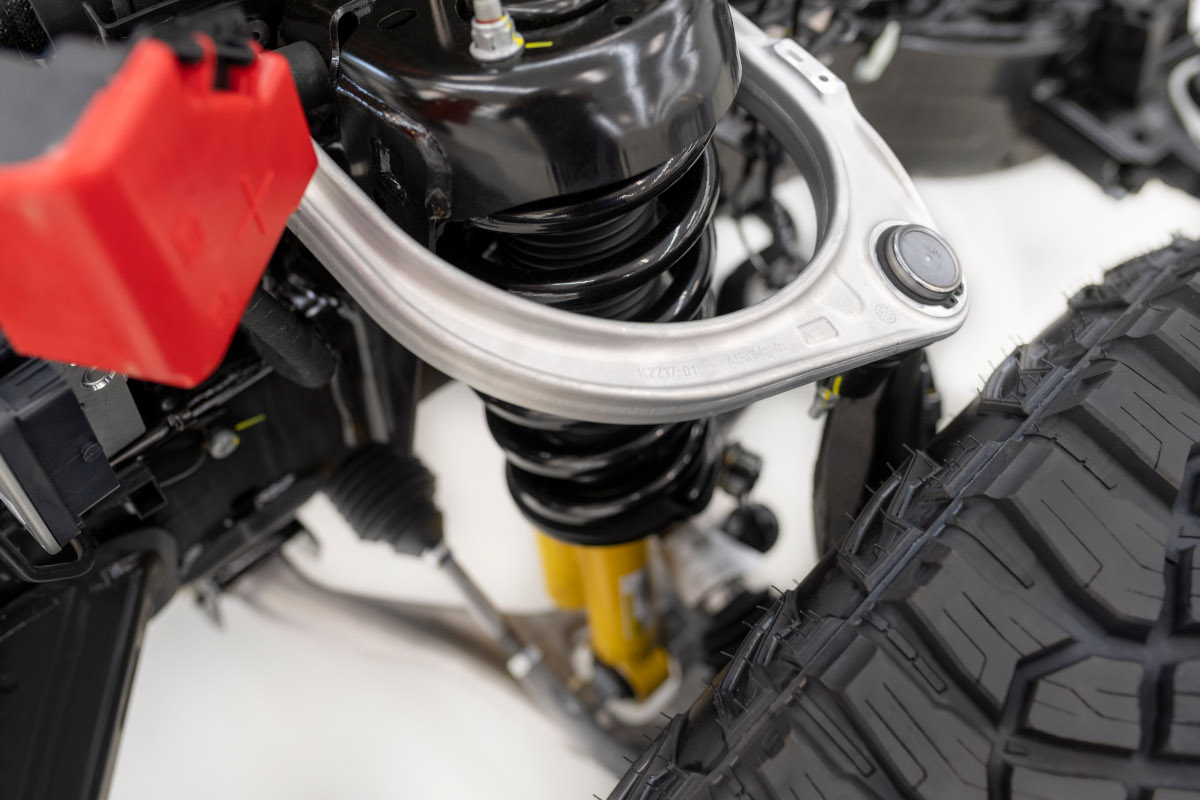By Will Marshal, Forge Overland
Every hard-core off-roader for decades –– from Wranglers to Power Wagons and even Broncos of yesteryear themselves –– have left their respective factories with one important feature that has captivated articulation devotees and rock crawlers alike: The solid front axle.
Except, the latest Bronco does not have one. Instead, it sports the truly sophisticated marvel of Independent Front Suspension (IFS). Normally reserved for speed queens and desert runners, independent suspension has never really found a welcome place among purist rock crawlers.
Many argue that the natural design of solid axles lends itself to the exceptional articulation qualities that hardcore rock crawlers know, love, and crave. Even Jeep refuses to bend to the changes of modernity and continues to offer solid axles exclusively on their Wranglers for that exact reason.
Physical Physics
So why the about-face for Bronco? Simple: Independent suspension is just better in every category, even if it is a little harder to execute. Independent suspension gets its name from the act itself: each corner suspended on forged aluminum double-wishbone control arms, operating independently from each other.
The solid front “beam” axle, which is influenced by each bump, dip, or small tree you happen to find yourself driving over is archaic. One side directly affects the other, because when one side goes up, it is still attached to the other end.
We don’t need to dust off the cobwebs too much to remember the laws of physics. Each action has an equal and opposite reaction. So, not only does Sir Isaac Newton’s laws influence directly what the suspension is doing, it has secondary effects upon the tires, and you as well. Because of the flat plane of the axle, your tires are also forced to move in that same arc, which means that when things get hairy –– you have less and less tire surface touching all those jagged and pointy rocks you just decided to take a shortcut through. That same reallocation of energy is also being sent through the suspension and chassis directly to you, creating a harsher ride, more body roll, and poor road handling. There are a lot of negatives adding up here for a solid axle, and a clear indicator why independent suspensions are leading the way into the future of off roading.
Bronco is sporting a robust design well-suited for road running, rock crawling, and yes, even high speed. Thanks to the natural athleticism of the H.O.S.S. (High-Performance Off-Road Stability Suspension) design and clever use of Bilstein position sensitive shocks, you’re looking at 17% greater suspension travel than the Rubicon Wrangler.
A semi-active hydraulic electronically disconnecting front sway-bar available on the Badlands trim allows even greater articulation and can be disconnected or reconnected during articulation –– instead of on a perfectly flat surface. Even greater, available front and rear electronic differential lockers allow Bronco to effortlessly navigate all these terrain types without missing a beat. Its ability to isolate the planes of movement to each tire and keep those tires level with the surface they are reacting against translates to better traction, more predictable handling, better ride, less fatigue and, best of all, ground clearance.
With having the driveline tucked up neatly out of the way, even greater clearance is available with a best-in-class 11.6” of space at its lowest point between you and those previously mentioned pointy rocks. That’s a stark difference to the Wrangler’s 9.75” with its large differential hanging down to be battered. Greater travel, greater control, and greater comfort lets you travel further and longer in search of that mystical place without cell service.
Smooth Is Fast and Smart
We all remember sticking our hands out the window of a moving car as kids, changing the angle of our tightly kept fingers and feeling the flow of air pass above and below our hands like the wing of a bird. We also remember getting a little too curious with our angles and suddenly our hands were ripped backward by the force of the wind. That same aerodynamic effect happens to the front of your vehicle as it cuts through the wind.
With an independent suspension, all the driveline components are tucked up out of the way in the innards of the vehicle, then sheathed in smooth protective skid plates. Those same smooth skid plates act as a runner for air at speed, funneling it and channeling it underneath the vehicle so that it does not impact the undercarriage. The unimpeded transition of air like the wing of a bird leads to aerodynamics that are impossible to achieve with a solid front axle hanging down and earns the Bronco greater fuel economy to go further into the back country, which is where you really want to be.
When you get to that picturesque lakeside retreat, you can also be more aware and alert, thanks to less noise, vibration, and harshness being transferred into the cabin of the vehicle. The suspension was engineered to do work for you, so that you can enjoy every ounce of experience available, at less of a cost to you and your Bronco.
Bottom Line
You cannot please everyone, but you can always improve. Bronco’s IFS is an unconventional choice when the target is aimed squarely at Jeep, so is it a winner? The answer is an unequivocal yes.
Solid axles have existed for hundreds of years in various applications, from locomotives to wagons crossing the Oregon Trail. We live in a day and age when compromising on old technology is not how you get to the finish line. The finish line is won by specialized engineering and dedicated prowess.
Ford set out to build a robust off-roading stallion with a racing pedigree to back it up. Bronco has a history of being a Baja champion, has added trophies for King of The Hammers, and now, the hearts of those who want to get lost, purely for the sake of adventure.




Comments
You must log in or register to post here.